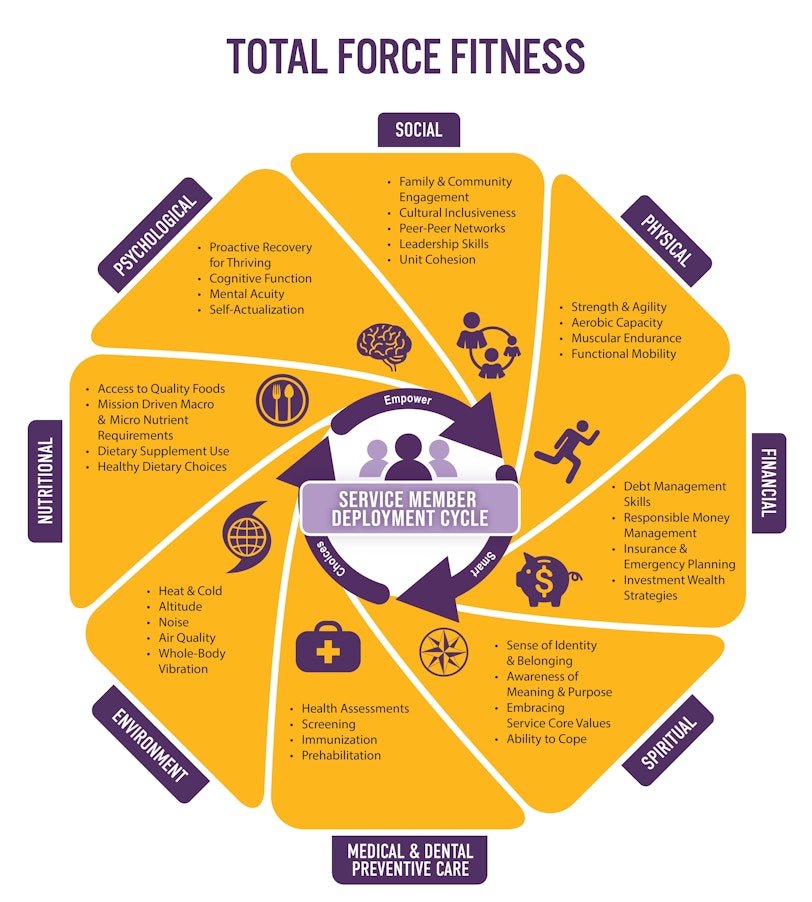Today’s workplace environment is undergoing rapid transformation, and remote work is at the forefront of it. In this comprehensive guide, we will explore the best practices of remote work, providing you with knowledge, strategies, and actionable tips that will help you find tranquility in this evolving work landscape.
Whether you are an individual worker, part of a remote team, or leading an organization - these insights will enable you to flourish while working remotely.
Setting Up Your Remote Workspace for Success
Establish a Comfortable Workspace
One of the cornerstones of remote work success is developing an ergonomic workspace. Just as a well-planned office layout fosters productivity, a home office should also consider your health and efficiency when planning its layout. Consider investing in ergonomic chairs, adjustable desks, and sufficient lighting systems from a reputable electrician company specializing in installation and repair services that support your well-being when setting up your space.

Remote Work Toolkit
Your digital toolkit is at the heart of remote work. From having a reliable internet connection to having all the necessary software and hardware, having essential tools is paramount to remote work success. Think of it as ensuring your toolbox is stocked with the best tools for the job. We’ve done all the heavy lifting for you and put together 25 smart list of remote work tools to assist you in excelling in this digital landscape.
The Role of Effective Communication in Remote Work
Communication is the cornerstone of any work environment, and in the context of remote work, its significance becomes even more pronounced. It plays a pivotal role in several key aspects:
Alignment: Clear communication aligns all team members toward shared goals, ensuring a mutual understanding of the overarching mission and individual roles within the team. Tools like Slack, Microsoft Teams, and Zoom offer instant messaging, video conferencing, and voice calls.
Collaboration: Communication serves as the conduit through which remote team members collaborate, exchange ideas, and contribute to projects. It fosters the synergy required for effective teamwork. Platforms such as Asana, Trello, and Jira aid in task management, project tracking, and progress monitoring.
Feedback and Recognition: Regular communication empowers managers to provide both positive feedback, which motivates and encourages, and constructive feedback, which promotes growth and improvement.
Clarity and Transparency: Transparent communication ensures that remote team members grasp company policies, expectations, and project details, reducing ambiguity and enhancing clarity.
Engagement and Connection: Communication is the vital force that keeps remote employees engaged and connected. It nurtures a sense of belonging, which is essential for job satisfaction and heightened productivity.
5 Time Management Tips for an Effective Remote Work Routine
Creating a structured remote work routine is akin to charting a path to productivity. Here are five practical and actionable time management tips to help you make the most of your remote work experience:
Prioritize Tasks: Commence your day by identifying the most crucial tasks. Utilize the Eisenhower Matrix to categorize tasks into four quadrants: urgent and important, important but not urgent, urgent but not important, and neither. Start with urgent and important tasks to address critical matters promptly.
Set Realistic Goals: It's imperative to establish attainable daily goals. Break down larger projects into smaller, manageable tasks. This not only reduces the feeling of being overwhelmed but also instills a sense of accomplishment as you complete each task. Realistic goals maintain motivation and keep you on the right track.
Create Time Blocks: Time blocking is a potent technique to structure your day. Allocate specific time blocks for different types of work. For instance, dedicate one block to focused, deep work on challenging tasks and another for emails and communication.
Minimize Distractions: Remote work can present numerous distractions, from household chores to social media. Set boundaries and communicate your work hours to those around you. Utilize website blockers or apps to restrict access to distracting websites during work hours. Silence non-essential notifications on your devices to maintain focus during your time blocks.
Review and Adjust: At the end of each day or week, review your tasks and goals. Evaluate your accomplishments and areas that need improvement. Modify your routine based on your productivity patterns. Stay adaptable and make changes as necessary to optimize your time management.
By combining effective communication strategies with a structured approach to time management, you can create a remote work environment that fosters collaboration, productivity, and job satisfaction while minimizing the risk of burnout.
Mitigating Miscommunication: A Remote Challenge
Miscommunication is a significant challenge in remote work, but with strategic approaches, it can be mitigated:
Clear Documentation: Teams should document their communication clearly. Meeting minutes, project status reports, and guidelines should be available for reference, reducing misunderstandings.
Structured Communication: Providing guidelines for communication, such as preferred channels for different types of messages, helps streamline and structure communication.
Active Listening: Encouraging active listening ensures that team members pay attention to messages and seek clarification when necessary.
Emoticons and Tone Awareness: In text-based communication, the use of emoticons and awareness of tone can help convey the intended message and reduce the risk of misinterpretation.
Conflict Resolution Strategies: Remote teams should have conflict resolution strategies in place to address misunderstandings promptly and constructively.
Staying Motivated and Avoiding Remote Work Burnout
Remote work offers flexibility and convenience, but it can also present challenges in terms of motivation and burnout. In this discussion, we explore strategies for maintaining motivation, preventing burnout, and nurturing well-being while working remotely.

Maintaining Motivation: Staying on Course
Motivation is the driving force behind productive remote work. Here's how to stay on course and remain motivated:
Goal Setting: Clearly define your goals and objectives. Knowing what you aim to achieve provides a sense of purpose and direction.
Routine and Structure: Create a daily routine that mimics an in-office schedule. Having structure helps you stay organized and on track.
Task Breakdown: Divide tasks into smaller, manageable components. This approach makes tasks less daunting and allows you to track your progress more easily.
Visualizing Success: Imagine the positive outcomes of your work. Visualization can boost motivation and increase your commitment to achieving your goals.
Accountability Partners: Share your goals with a trusted colleague or friend. Having someone to hold you accountable can keep you motivated.
Reinforcement and Rewards: Celebrate your achievements, no matter how small. Rewards provide positive reinforcement and keep you motivated.
Burnout Prevention: Strategies for Long-term Success
Burnout is a real concern in remote work. According to Indeed, 38% of employees suffer remote work burnout because they feel pressured by management. Implement these 6 strategies to prevent it:
Set Boundaries: Define clear boundaries between work and personal life. Avoid overworking and allow yourself to disconnect after work hours.
Regular Breaks: Take regular breaks throughout the day to recharge. Short breaks can boost productivity and reduce stress.
Variety in Workspaces: If possible, change your workspace occasionally. Working from different environments can reduce monotony.
Social Interaction: Maintain social connections with colleagues and friends. Isolation can contribute to burnout, so stay connected through virtual meetings and chats.
Wellness Activities: Incorporate wellness activities into your routine. Exercise, meditation, and hobbies can reduce stress and improve well-being.
Time Management: Manage your time effectively. Prioritize tasks, set realistic deadlines, and avoid overcommitting.

Self-Care: Nurturing Well-being While Working Remotely
Well-being is integral to remote work success. Nurturing your well-being involves several self-care practices:
Healthy Lifestyle: Maintain a balanced diet, stay hydrated, and get regular exercise. A healthy body contributes to a healthy mind.
Mental Health Awareness: Be mindful of your mental health. If you're feeling overwhelmed or stressed, seek support or professional guidance.
Work-Life Balance: Strive for a healthy work-life balance. Make time for family, leisure, and personal interests.
Unplugging: Take time to unplug from screens and technology. A digital detox can rejuvenate your mind and reduce eye strain.
Learning and Growth: Continue to learn and grow. Acquiring new skills and knowledge can boost your self-esteem and motivation.
Positive Affirmations: Practice positive self-talk. Affirmations can enhance your self-confidence and overall outlook.
Finding Balance Between Work and Life When Working Remote
Remote work offers flexibility, but it also blurs the lines between work and personal life. Achieving balance is crucial for your well-being and overall success. These simple tips will help you make the best of it.
Setting Boundaries: Separating Work and Personal Life
Establish clear boundaries between your work and personal life. Define specific work hours, and when those hours end, make a conscious effort to disconnect from work-related tasks. This helps create a mental separation between your professional and personal life.
Work-Life Balance: Cultivating a Harmonious Lifestyle
Cultivate a work-life balance that supports both your career and personal well-being. Prioritize time for your family, hobbies, and relaxation. Achieving harmony between these aspects of your life contributes to a more fulfilling and sustainable remote work experience.
Disconnecting: Unwinding from Work
Make it a practice to fully disconnect from work during your designated non-working hours. This means turning off work-related notifications, emails, and communication channels. Engage in activities that help you unwind and recharge, whether it's reading, exercising, or spending quality time with loved ones.
Basically, finding balance while working remotely involves setting clear boundaries to separate work from personal life, cultivating a work-life balance that supports both aspects, and actively disconnecting from work during non-working hours. This balance is essential for your well-being, ensuring a satisfying and sustainable remote work experience.
9 Actionable Tips to Safeguard Data in a Remote Work Setting
In the ever-evolving landscape of remote work, ensuring the security and data privacy of your digital workspace is paramount. With the rise of remote work, new challenges and vulnerabilities have emerged. To help you navigate this digital realm securely, we've curated 7 actionable tips that will safeguard your data and protect your digital workspace.

Implement Strong Password Policies: Encourage employees to use complex, unique passwords for their work accounts. Consider using a password manager to generate and store secure passwords. Regularly update passwords and enable two-factor authentication (2FA) wherever possible
Use Secure Virtual Private Networks (VPNs): Require remote employees to connect to the company network through a VPN. VPNs encrypt data transmission, enhancing security. Ensure that your chosen VPN service is reputable and regularly updated for security. Also get to grips with how a cloud VPN works, as this will ensure that you are able to implement one in the most secure and efficient way when enabling remote work.
Educate Employees on Phishing Risks: Conduct regular training sessions to raise awareness about phishing threats. Teach employees how to recognize phishing emails and websites. Encourage them to verify the authenticity of any unexpected email requests, especially those related to sensitive data.
Secure Devices and Networks: Ensure that employees' home Wi-Fi networks are secure, with strong passwords and up-to-date firmware. Provide guidelines on securing home workstations, including installing antivirus software and keeping operating systems and software patched and updated. When securing home workstations, it is imperative to install reliable antivirus for Windows 11 and consistently update both the operating systems and software to ensure robust cybersecurity measures.
Establish Data Access Controls: Implement role-based access controls (RBAC) to restrict data access based on job roles. Only grant access to essential data and systems. Regularly review and update these access controls to match employee responsibilities. In addition, regularly back up your work data to a secure, cloud-based storage service. In case of a data breach or loss, you can quickly recover your essential information.
Regular Security Audits and Assessments: Conduct periodic security audits and assessments to identify vulnerabilities in your remote work setup. Address any weaknesses promptly. Utilize penetration testing and security monitoring to proactively detect and mitigate threats. Additionally, keep your operating system and software up to date. These updates often include security patches to protect against vulnerabilities.
Encourage Secure File Sharing and Storage: Provide guidelines for secure file sharing and storage. Encourage the use of encrypted file-sharing services and cloud storage solutions. Train employees on how to securely share and store sensitive data, emphasizing the importance of encryption and access controls.
Uncommon Security Measures
Biometric Authentication for Virtual Meetings: Implement biometric authentication for virtual meetings. This involves using fingerprint or facial recognition to ensure that only authorized personnel can access sensitive discussions and presentations in virtual meetings.
AI-Powered Behavior Analysis: Employ AI-powered behavior analysis tools that monitor user behavior during remote work. These tools can detect anomalies in work patterns, such as sudden spikes in data access or unusual login times, and alert administrators to potential security breaches.
Professional Development in a Remote Work Setting
The landscape of professional development has undergone a profound transformation with the advent of remote work. As we adapt to this new paradigm, two crucial facets of professional growth stand out: online learning and remote networking.
Online Learning: Skills Enhancement in a Remote World
The digital realm has become the new classroom, and online learning has emerged as an indispensable tool for professional development. Here, we explore the impact of online learning and how it facilitates skills enhancement in a remote work environment.
Accessible Learning Resources: Online courses, webinars, and e-learning platforms provide readily accessible resources for individuals to acquire new skills and knowledge. The flexibility of online learning accommodates remote work schedules, enabling professionals to upskill or reskill at their convenience.
Diverse Learning Formats: The diversity of online learning formats allows professionals to choose the style that suits them best. Whether it's video lectures, interactive modules, or self-paced courses, the range of options caters to different learning preferences.
Global Learning Communities: Online learning connects individuals with global communities of learners and experts. This exposure to diverse perspectives and experiences enriches the learning process and fosters a more comprehensive understanding of one's field.
Continuous Adaptation: The ever-evolving nature of remote work necessitates continuous learning. Online platforms facilitate staying up-to-date with industry trends, tools, and best practices, enabling professionals to remain competitive in their fields.
Certifications and Credentials: Online courses often offer certifications and credentials that validate acquired skills. These certificates not only enhance one's professional profile but also demonstrate a commitment to ongoing growth and development.
Networking Remotely: Fostering Career Growth
Networking has always been a cornerstone of career growth, and in the remote work setting, it takes on a digital form. Remote networking plays a pivotal role in connecting professionals, sharing insights, and nurturing career advancement.
Virtual Networking Events: Virtual conferences, webinars, and networking events have become the norm. Professionals can attend these events from anywhere, allowing for meaningful connections with peers, mentors, and potential collaborators.
Digital Platforms: Social media platforms, professional networking sites, and online communities provide spaces for remote professionals to engage in discussions, share knowledge, and seek opportunities. These platforms have expanded the reach of networking beyond geographical limitations.
Building an Online Presence: Building a strong online presence is crucial for career growth in a remote work setting. Maintaining an active and professional digital persona can attract opportunities, partnerships, and collaborations.
Mentoring and Coaching: Remote mentoring and coaching relationships are thriving. Professionals can access mentors and coaches from around the world, gaining valuable insights and guidance tailored to their goals.
Global Perspectives: Remote networking offers exposure to a global network of professionals. This exposure brings fresh perspectives, diverse skill sets, and a global outlook that can be instrumental in career development.

Remote Work Best Practices for Employers and Managers
Remote work has revolutionized the way businesses operate, and employers and managers play a pivotal role in ensuring the success of remote teams. Here, we delve into two essential aspects of remote work best practices: creating a remote-friendly work culture and effective remote team management.
Creating a Remote-Friendly Work Culture
A remote-friendly work culture is the foundation on which successful remote teams are built. It encompasses the values, practices, and policies that support remote work while maintaining a cohesive and productive workforce.
Clear Communication: Transparent and open communication is the cornerstone of a remote-friendly culture. Employers and managers should establish communication channels that facilitate regular updates, feedback, and information sharing.
Trust-Based Relationships: Building trust between employers, managers, and remote employees is vital. Trust allows for autonomy and flexibility, essential elements in a remote work environment. Trust-based relationships result in a more motivated and engaged workforce.
Flexible Work Policies: Remote work thrives on flexibility. Employers should craft policies that empower employees to choose when and where they work. Flexible policies, such as flexible hours and results-based evaluations, enhance work-life balance and job satisfaction.
Technology and Tools: Providing the right technology and tools is essential for remote work. Employers should invest in secure and user-friendly digital platforms, collaboration tools, and project management software to enable seamless remote work.
Professional Development: Remote-friendly cultures prioritize professional development. Employers should support remote employees with learning opportunities, skill development, and career advancement, nurturing a sense of belonging and growth.
Effective Remote Team Management
For effective and efficient people management, managers must adapt their approach to ensure remote teams are motivated, connected, and thriving. Here are some ideas to explore:
Clear Expectations: Managers should set clear expectations and goals for remote team members. This clarity helps remote employees understand their roles and responsibilities, leading to increased accountability and productivity.
Regular Check-Ins: Regular one-on-one check-ins and team meetings are vital for remote teams. Managers should maintain consistent communication to provide guidance, feedback, and a sense of connection.
Performance Metrics: Remote team members should be evaluated based on results and performance metrics rather than hours worked. This shift towards outcome-based evaluation ensures fairness and encourages a results-oriented mindset.
Inclusive Team Building: Managers should prioritize inclusive team building, fostering a sense of belonging among remote team members. Virtual team-building activities, recognition, and celebrations help strengthen the team's cohesiveness.
Conflict Resolution: Managers should be equipped to handle conflicts and challenges that may arise among remote team members. A proactive approach to conflict resolution promotes a positive team dynamic.

What Does The Future Of Remote Work Look Like?
In the wake of the transformative events brought about by the global pandemic, remote work has emerged as not just a defining element of the modern workplace but has been positioned as the future.
As we venture into this new way of work-life, understanding the trends and predictions surrounding remote work becomes crucial. Here are some of the key trends and predictions that are shaping the future of remote work:
Hybrid Work Models: Many organizations are adopting hybrid work models, where employees split their time between the office and remote locations. This approach provides the flexibility employees crave while maintaining face-to-face collaboration when necessary.
Technology Integration: The integration of advanced technologies like AI, virtual reality, and augmented reality will further enhance the remote work experience. These innovations will bridge the physical gap and create immersive virtual work environments.
Global Talent Pool: Remote work erases geographical boundaries, allowing companies to tap into a global talent pool. This trend will lead to more diverse and inclusive teams, fostering innovation and creativity.
Work-Life Balance: Striking a healthy work-life balance will be a central focus. Employers are increasingly aware of the need to support their employees' well-being, which will lead to policies that protect personal time and prevent burnout.
Security and Data Privacy: With the proliferation of remote work, cybersecurity and data privacy will become paramount. Companies will invest heavily in protecting sensitive information and ensuring secure communication channels.
Redefined Office Spaces: The traditional office space will evolve into collaborative hubs rather than individual workstations. These spaces will be designed to facilitate teamwork and innovation, making in-person interactions more purposeful.
Preparing for the Future: Adapting to New Work Norms
In preparing for the future, individuals and organizations must adapt to the new work norms that remote work entails. Here are some key strategies to navigate this evolving landscape successfully:
Skill Development: Continuous learning and skill development are essential. Individuals should stay updated with the latest technologies and tools relevant to their field.
Effective Communication: Clear and effective communication is vital in remote work environments. Employers and employees must master digital communication tools and practices to maintain productivity and collaboration.
Flexibility and Adaptability: Being flexible and adaptable to change is a fundamental skill in the future of remote work. Embracing new work models and technologies is essential for success.
Well-Being Focus: Prioritizing mental and physical well-being is a non-negotiable. Employers should support employees in managing stress and maintaining a healthy work-life balance.
Security Awareness: Both individuals and organizations must stay vigilant about cybersecurity. Training and awareness programs are essential to safeguard against potential threats.
Inclusivity and Diversity: Creating an inclusive and diverse remote work environment is a strategic advantage. It fosters innovation and attracts a wider range of talents.
Conclusion
This comprehensive guide serves as a blueprint for mastering remote work environments. It covers every critical aspect, from setting up an efficient workspace and structuring productive workdays to effective communication, motivation, and maintaining a healthy work-life balance.
Moreover, it addresses the vital subjects of security measures, and professional development opportunities, and provides valuable insights for employers and managers. With these best practices, you're well-prepared to excel in the evolving world of remote work.





